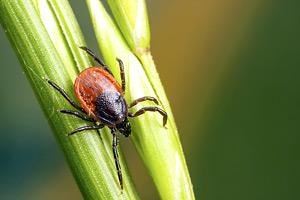A walk in the woods, a little prick and soon the feeling of being sick—all perhaps caused by a tiny tick.
Summer is tick season and on June 1 Canada’s Public Health Agency started consultation to develop a federal framework to deal with Lyme disease in Canada. The move comes after Parliament passed a private members bill by Green Party Leader Elizabeth May late last year, to develop a comprehensive federal framework on Lyme disease.
“[Lyme disease] is the fastest growing vector-borne disease in North America, particularly the United States,” said Dr. Perry Kendall, BC provincial health officer, citing climactic reasons for the rapid spread south of the border.
Lyme disease is an illness, caused by the bite of backlegged ticks infected with the Borrelia burgdorferi bacterium. According to the Health Canada website, while not all blacklegged ticks carry the bacterium, the risk of contracting Lyme disease is on the rise because of the growing number of infected ticks in Canada.
Kendall explained, while Lyme disease is not yet an epidemic here in BC it is still a serious concern, as residual symptoms can arise even after treatment—for example arthritis, heart problems, paralysis and chronic pain.
While the tell tale bullseye rash may or may not be an indicator of Lyme disease, symptoms include fatigue, fever or chills, headache, spasms or weakness.
According to Kendall risk areas for Lyme disease in BC include the southern interior and south coast.
“We know that the agent is out there, but we know that the prevalence is very low,” said Dr. Paul Martiquet, rural public health officer for Sunshine Coast, Sea-to-Sky, Bella Bella/Bella Coola. “Less than one per cent of the ticks we send into the lab for testing are positive for the agent that causes Lyme disease.”
Martiquet said, although Lyme disease has not been found in Powell River, doctors have noted it in the Sea-to-Sky area.
While ticks can be small, about the size of a flax seed, they can become quite large and prone to bursting when engorged with blood.
If a tick is found, Martiquet recommends going to your physician to have it removed as improperly extracted ticks increase the likelihood of infection.
Martiquet added, patients can ask doctors to send removed ticks to the BC Centre for Disease Control for testing.
“The best way for people to avoid contracting the disease from the ticks is to prevent having ticks attach themselves to your body,” said Martiquet.
Recommendations include wearing long-sleeved shoes and pants, tucking pants into socks and using insect repellant containing DEET and doing a tick search when coming out of the woods.
Federal consultation on Lyme disease is open until June 30. Canadian citizens can participate online.
For more information readers can talk to their family doctor or visit the BC Centre for Disease Control website.



